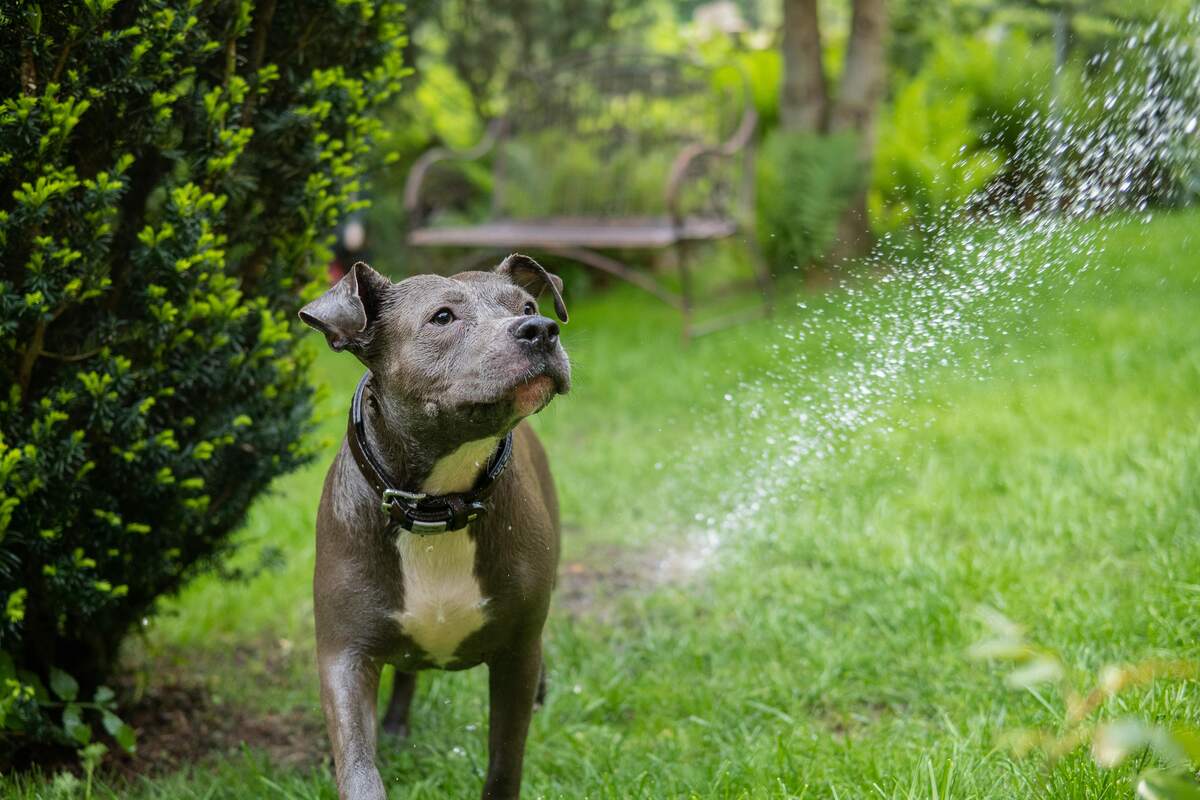
Staffordshire Bull Terriers are known for their affectionate dispositions, spunky personalities, and lovable little faces! These dogs are incredibly common in shelters, but before adopting, you may want to know more about their lifespan and how to care for them.
In this article, we’ll discuss how long Staffies live on average, their most common causes of death, and how to increase your dog’s lifespan.
How Long Do Staffordshire Bull Terriers Live?

Staffordshire Bull Terriers live an average of 12-15 years. This is common for dogs of their size, and they’re generally fairly healthy pups. Common health problems in Staffies include elbow and hip dysplasia, as well as eye problems, such as juvenile cataracts.
Of course, some Staffies will live much longer than 15 years – the oldest Staffie on record is a mixed breed named Ty. He celebrated his twenty-third birthday in 2023!
On the other hand, some Staffies sadly die at a very young age. This can happen due to bad genetics, neglect, or illness.
Most Common Cause of Death in Staffordshire Bull Terriers

Two of the most common causes of death in Staffordshire Bull Terriers include:
Heart failure
Heart failure is the leading cause of death in senior Staffordshire Bull Terriers. They’re more prone to dilated cardiomyopathy, or DCM, which occurs when a dog’s heart muscle becomes thin and weak. It stops pumping blood out to the rest of the body, creating a dilated or enlarged heart.
Cancer
Unfortunately, cancer can occur in any dog breed and is the leading cause of death in dogs as a whole, especially those who make it to old age. Specifically, Staffies are more at risk of developing mast cell tumors than most other dog breeds.
How to Help Your Staffordshire Bull Terrier Live Longer

The following can help your dog to live a long, healthy life:
Adopt or Shop Responsibly
If you’re adopting your Staffordshire Bull Terrier from a shelter or rescue, you cannot control their genetics. However, for those shopping with a breeder, it’s vital to choose one who breeds ethically. They’re unfortunately rare compared to backyard breeders and puppy mills.
Your breeder should complete all recommended health testing on both parent dogs and publish the results. Dogs with known health conditions should not be bred. A reputable breeder prioritizes health and temperament over appearance, ensuring that their puppies lead long, healthy, and happy lives.
Routine Vet Visits
All dogs should see the vet at least once a year, even if they appear healthy. Bloodwork can help to rule out various health problems or catch them before your dog shows symptoms of illness.
We also recommend keeping your pup on year-round flea and heartworm protection, as well as staying up to date on the vaccinations your veterinarian recommends.
At Home Monitoring

Getting to know your dog’s habits is equally important when it comes to catching illness early. If your Staffy isn’t acting like itself, it’s time for a vet visit, even if it appears healthy otherwise.
We also recommend monitoring their food and water intake, potty habits, and routinely checking their body for any lumps, bumps, or irritation.
Diet and Exercise
Feeding a balanced dog food and exercising your dog daily helps to keep them in shape. Though it can be tempting to feed your good pup all the treats, remember that treats should only make up 10% or less of their daily calories.
Keeping your Staffie at a healthy weight reduces their risk of health problems and helps them live longer. If you’re unsure whether your dog is overweight, ask your veterinarian or refer to a body condition score chart.
Dental Hygiene

Like with humans, a dog’s dental health can impact the rest of their body. Dental disease can lead to complications in the heart, liver, or kidneys.
Unfortunately, dental disease is incredibly common in dogs. You can prevent this in your Staffie by keeping their teeth as clean as possible using a dog-safe toothpaste. The ideal is to brush their teeth at least once daily. However, there are also other ways to clean the teeth, such as dental diets, chew toys, dental sprays, and even water additives that help fight plaque buildup.
We don’t recommend giving your dog bones to clean their teeth, as cooked bones tend to splinter and can potentially damage your dog’s digestive system. Raw bones, like all raw food, come with several health risks to both your dog and your human family.
Planning for Emergencies

Veterinary care in the United States is expensive! This is especially true if your dog ever needs to visit an emergency vet clinic.
Every dog parent should have a plan in place so that their dog can receive the care it needs should it become sick or injured. You can do this by saving an emergency fund or purchasing pet insurance.
Pet insurance is best suited for young dogs without pre-existing conditions, but it may not be the right fit for every dog. It’s possible that you’ll spend more on insurance than the insurance ever pays out. However, it can also be the difference between life and death in an emergency situation, when you wouldn’t be able to afford your dog’s care otherwise.
Conclusion

Staffordshire Bull Terriers typically live for around 12-15 years, which is typical for a dog of their size and breed. The most common causes of death in Staffies are heart failure and cancer.
To give your pup the longest, happiest life possible, schedule regular check-ups at the vet, keep them at an ideal weight, and monitor them at home for signs of illness, including changes in habit or personality.



